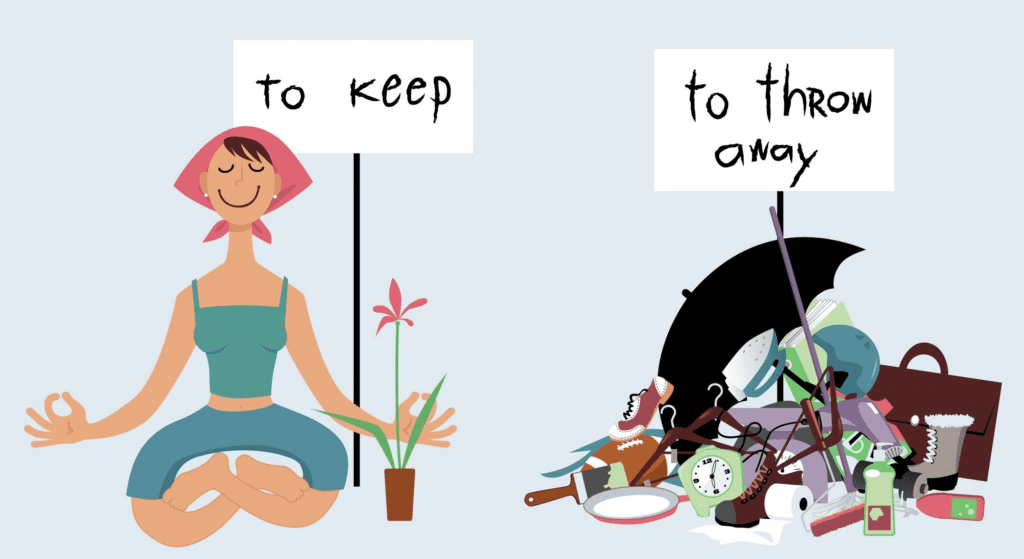
-
Pinterest
In the whirlwind of modern life, it’s easy to overlook the small, tangible things around us that need fixing. A broken chair, a leaky faucet, a cluttered room—these physical manifestations of disarray can subtly reflect and influence our inner emotional state. There’s a profound connection between the external order of our environment and our internal well-being. Engaging in the fine art of mending and clearing clutter can offer surprising emotional healing and mental clarity. Here’s how fine art of mending can bring a sense of peace and rejuvenation to our lives.
Why Fine Art of Mending is Necessary for Inside Healing?
The fine art of mending is much more than a practical skill; it is a profound practice that can aid in emotional healing. By restoring a sense of control, promoting mindfulness, symbolizing resilience, facilitating emotional release, encouraging reflection, and building a sense of accomplishment, mending provides a holistic approach to healing. It cultivates patience, creates a nurturing environment, enhances connection, and reinforces the value of care and maintenance. Embrace the practice of mending in your life, and discover how these small acts of restoration can lead to significant emotional healing and personal growth.
The fine art of mending is essential for inside healing because it allows us to restore not just the broken items in our lives but also our sense of control and balance. Engaging in the careful process of fixing and organizing creates a meditative space where we can focus on the present moment, providing a much-needed respite from emotional turmoil. Each act of mending becomes a powerful symbol of resilience, showing us that what is broken can be made whole again, often more beautiful for having been repaired. This practice fosters patience, self-compassion, and a profound sense of accomplishment, ultimately nurturing our emotional well-being and helping us move forward with renewed strength and clarity.
How Fine Art of Mending can make Little Healing Inside?
1. The Therapeutic Nature of Fixing Things
There’s something inherently satisfying about fixing a broken object. The process of repairing something can be therapeutic, providing a sense of accomplishment and purpose. When you mend a broken chair or sew a torn piece of clothing, you’re not just restoring its functionality but also reclaiming control over your environment. This act of restoration can mirror the healing process in our own lives, giving us the confidence to address and mend emotional wounds.
2. Clutter Clearing as Emotional Catharsis
Clearing clutter isn’t just about making a space look neat; it’s about creating an environment that fosters peace and clarity. Clutter can be overwhelming, both visually and mentally. It’s often a physical manifestation of unresolved issues and postponed decisions. When you take the time to declutter, you’re making a conscious effort to address these lingering aspects of your life. This process can be cathartic, helping you to let go of the past and make room for new opportunities and experiences.
3. The Psychology Behind a Tidy Space
Psychological studies have shown that a tidy, organized space can significantly reduce stress and anxiety. When your surroundings are orderly, it can create a sense of calm and stability. This is because a clutter-free environment reduces the mental load associated with visual chaos. It’s easier to focus, think clearly, and feel more at peace. This tidiness can act as a foundation for emotional well-being, allowing you to approach life’s challenges with a clearer mind.

-
Pinterest
4. Symbolism in Repairing and Mending
Repairing broken items can hold deep symbolic meaning. It’s a physical representation of resilience and recovery. Just as you piece together a broken vase, you can rebuild aspects of your life that have been fractured. The Japanese art of Kintsugi, where broken pottery is mended with gold, beautifully illustrates this concept. The repaired item becomes more beautiful for having been broken, symbolizing the idea that our struggles and repairs add to our character and strength.
5. Practical Steps for Emotional and Physical Mending
Start Small: Begin with simple tasks like fixing a squeaky door or organizing a drawer. These small wins can build momentum and motivate you to tackle larger projects.
Set Realistic Goals: Break down big tasks into manageable steps. Instead of aiming to declutter an entire room in one day, focus on one section at a time.
Mindful Approach: Approach these tasks mindfully. Pay attention to the process, savoring the sense of accomplishment that comes with each completed task.
Letting Go: Use the decluttering process as an opportunity to let go of items that no longer serve you. This can be symbolic of releasing emotional baggage.
Celebrate Progress: Acknowledge and celebrate your progress, no matter how small. This reinforces the positive impact of your efforts on your emotional well-being.
6. The Ripple Effect on Mental Health
The benefits of fixing and decluttering extend beyond immediate satisfaction. These activities can lead to long-term improvements in mental health. By creating a more orderly and functional living space, you reduce daily stressors and distractions. This frees up mental energy that can be directed towards more meaningful pursuits, such as hobbies, relationships, and personal growth. The sense of control and accomplishment derived from these tasks can boost self-esteem and foster a more positive outlook on life.

-
Pinterest
7. Creating a Ritual of Maintenance
Incorporate regular maintenance and decluttering into your routine. This isn’t about achieving perfection but maintaining a sense of order and care in your environment. Regularly tending to your space can prevent the buildup of clutter and small issues that can become overwhelming if left unattended. It’s a way of showing respect and love for your living space, which in turn, reflects and nurtures your self-respect and self-care.
8. Involving Loved Ones
Fixing and decluttering can also be a communal activity. Involve family members or friends in these tasks. It can strengthen bonds and create shared experiences of accomplishment and care. Working together to create a harmonious environment can enhance relationships and foster a sense of community and mutual support.
9. A Holistic Approach to Healing
Embracing the art of mending and decluttering as part of a holistic approach to emotional healing can be transformative. It’s about recognizing the interconnectedness of our physical environment and emotional state. By taking proactive steps to fix and organize our surroundings, we’re also taking steps towards emotional clarity and resilience.

-
Pinterest
More Related Posts:
- 6 Free Reverse Coloring (Doodle Coloring) Printables
- 4 Free Coloring Printables to Encourage You
- The Healing Power of Pets: How Animal Companions Boost Our Mental Health
- Finding Peace After Heartbreak: Emotional Healing in an Important Relationship
Fix What’s Broken, Heal What’s Hurt
The fine art of mending and decluttering offers a powerful, yet often overlooked, pathway to emotional healing. By engaging in these tangible acts of care, we can create a more serene and orderly environment that mirrors and supports our internal well-being. Each repaired item and cleared space represents a step towards reclaiming control, fostering resilience, and nurturing a sense of peace within. Embrace this process as a meaningful and empowering journey, and discover how fixing the things in your life can lead to profound healing inside.

